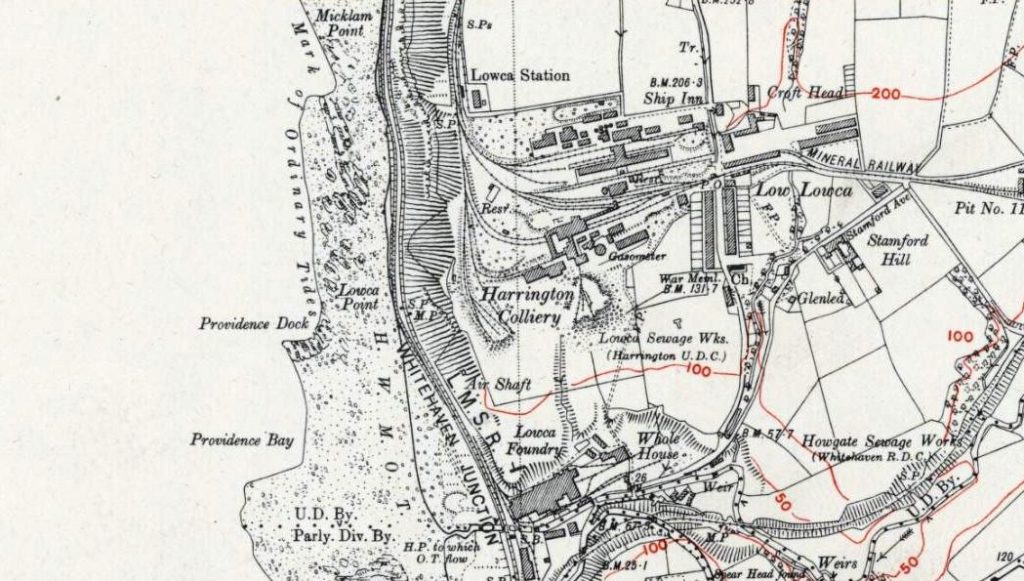Harrington No 10 Pit was part of the Lowca Colliery, and was located on a hill overlooking the Solway Firth close to the village of Lowca, some three miles north of Whitehaven. The colliery was first sunk in 1908 and prior to nationalisation it belonged to the United Steel Company Limited. The shafts were known as the No.10 downcast, which was 20 feet in diameter, and the No.9 upcast, which was 16 feet in diameter. The pit bottom was in the Six Quarters Seam at a depth of 648 feet and the Main Band Seam at the shaft lay at a depth of 350 feet. The Colliery employed 770 people of which 530 worked underground and 240 of which 30 were women were employed at the surface. 196 were engaged at the coalface and 335 on the haulage. The Main Band Seam was 350 feet below sea level and four districts were being worked.
The Main Band seam was overlain by a thick sandstone roof and was 12 feet thick coal with thin dirt partings, but the roof coal, 2 ½ feet thick was not worked. The floor was of fireclay and then thick hard shale. Four units or districts were being worked and they were entered form the Main Band Engine Plane which started at the Lickbank Junction off the North Plane haulage about one and a half miles from the shaft and ran west for about a mile under the sea.
It was known as a wet pit but it had been free from serious accidents, until 9th December, 1946, when an explosion claimed the lives of 14 men. It is thought that a miner opened up his lamp in an attempt to relight it. This caused the explosion of the methane (firedamp) in the mine. The full report can be found here.

OS Map, Cumberland LXI.SW 1938
Reproduced by permission of the National Library of Scotland

